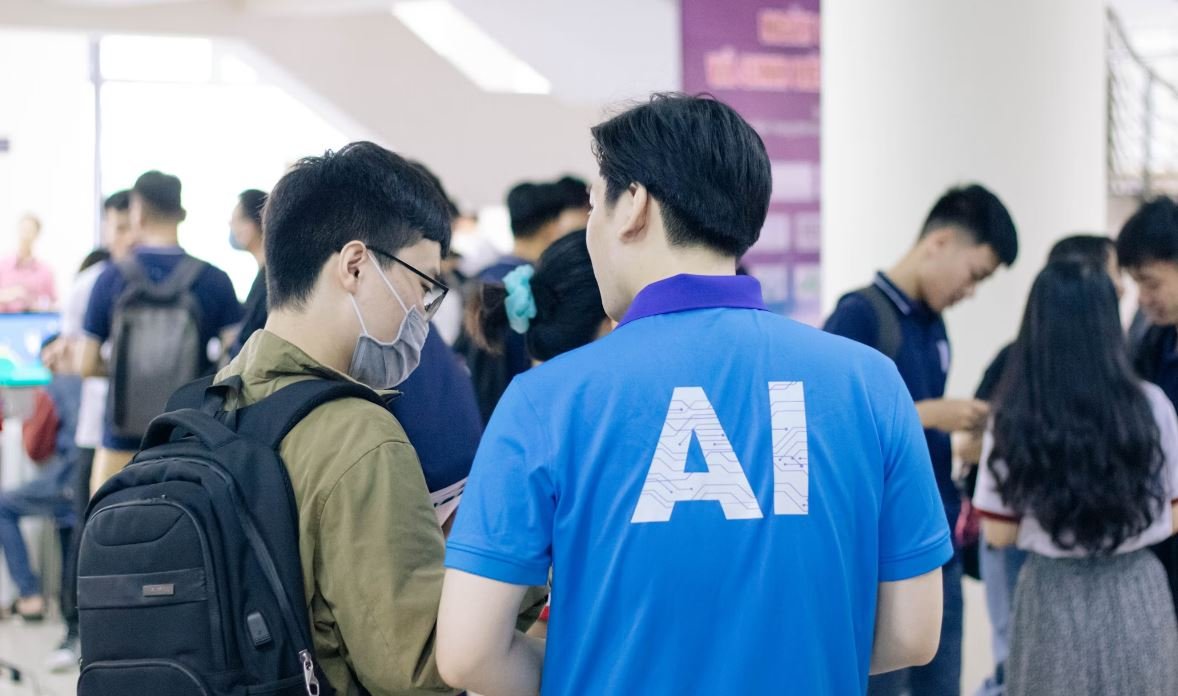AI Voice Text to Speech
Text to speech technology has come a long way in recent years, thanks to advancements in artificial intelligence (AI). AI voice text to speech systems are now capable of generating natural-sounding human-like speech that can be used across various applications, such as voice assistants, audiobooks, and even in customer service interactions. In this article, we will explore the benefits of AI voice text to speech and how it is revolutionizing the way we interact with digital content.
Key Takeaways:
- AI voice text to speech transforms written text into natural-sounding human-like speech.
- It offers many applications, including voice assistants, audiobooks, and customer service interactions.
- AI voice text to speech enhances accessibility by providing an alternative way to consume digital content.
The Power of AI Voice Text to Speech
One of the key benefits of AI voice text to speech is its ability to transform written text into speech that sounds remarkably human. The technology uses deep learning algorithms to analyze and understand the semantics, inflections, and nuances of human speech. This deep understanding enables AI systems to generate speech that is indistinguishable from that of a real person.
*AI voice text to speech technology has evolved to a point where it can even replicate individual accents and speech patterns, truly mimicking human speech in a powerful way.*
By converting written text into speech, AI voice text to speech systems allow users to consume content without having to read it. This has significant implications for individuals with visual impairments, learning disabilities, or those who simply prefer audio-based content consumption. AI voice text to speech enhances accessibility and provides an alternative way to access information across multiple domains.
Applications of AI Voice Text to Speech
The applications of AI voice text to speech technology are diverse and continue to grow. Here are some notable examples:
1. Voice Assistants:
AI voice text to speech is a fundamental component of voice assistants like Siri, Alexa, and Google Assistant. These voice-activated digital assistants can perform various tasks, such as answering questions, sending messages, and controlling smart home devices, by responding to verbal commands. The ability to generate human-like speech is crucial for providing a natural and engaging user experience.
2. Audiobooks and Narration:
AI voice text to speech is transforming the audiobook industry by automating the narration process. Text-based books can be converted into audio format using AI voice text to speech systems, thus democratizing the audiobook creation process. This technology also enables publishers to create multiple versions of audiobooks in different languages and accents more efficiently.
3. Customer Service and Interactive Voice Response (IVR) Systems:
AI voice text to speech plays a vital role in customer service interactions. By incorporating natural-sounding human-like speech, AI systems enhance the customer experience and reduce the reliance on human agents. The technology enables voice bots to guide customers through a range of tasks, such as making appointments, providing product information, and handling basic queries, efficiently and effectively.
Improving Naturalness and Personalization
As AI voice text to speech technology continues to advance, developers are constantly working on improving the naturalness of generated speech. This includes refining prosody and intonation to make the speech sound more human-like. Additionally, personalized AI voices are becoming more prevalent, allowing users to choose a voice and accent that suits their preferences.
*The ability to personalize AI voices not only improves the user experience but also adds a personal touch to interactive applications.*
Table 1: Comparison of AI Voice Text to Speech Systems
| Feature | System A | System B | System C |
|---|---|---|---|
| Naturalness | High | Medium | Low |
| Available Voices | 5 | 10 | 3 |
| Supported Languages | 15 | 20 | 10 |
Table 2: Popularity of AI Voice Text to Speech Applications
| Application | Percentage of Users |
|---|---|
| Voice Assistants | 45% |
| Audiobooks | 30% |
| Customer Service | 25% |
The Future of AI Voice Text to Speech
The future of AI voice text to speech technology is promising. Continued advancements in AI algorithms, combined with more comprehensive data sets, will further enhance the naturalness of generated speech and enable systems to understand and respond to nuances in human communication.
With the increasing demand for voice-enabled devices and voice-controlled experiences, AI voice text to speech systems will play a crucial role in shaping the future of human-technology interaction.
Table 3: Predicted Growth of AI Voice Text to Speech Market
| Year | Market Size (in billions) |
|---|---|
| 2022 | 5.3 |
| 2025 | 9.1 |
| 2030 | 14.2 |
As technology continues to evolve, we can expect AI voice text to speech systems to become even more prevalent, transforming the way we consume and interact with digital content. With their ability to generate natural-sounding human-like speech, these systems offer endless possibilities for enhancing accessibility, entertainment, and customer service across various industries. Exciting times are ahead for the world of AI voice text to speech!

Common Misconceptions
Misconception 1: AI Voice Text to Speech can perfectly mimic human speech
- AI Voice Text to Speech technology has made significant advancements, but it still lacks the nuances and emotions that are unique to human speech.
- Although AI can produce natural-sounding speech, it may still sound robotic or unnatural in certain contexts.
- Understanding context and human emotions remains a challenge for AI Voice Text to Speech systems.
Misconception 2: AI Voice Text to Speech is exclusively used in voice assistants
- While voice assistants like Siri and Alexa heavily rely on AI Voice Text to Speech, the technology has a much broader range of applications.
- It is used in audiobooks, language learning apps, automated customer service systems, and more.
- AI Voice Text to Speech can be integrated into various platforms and devices to enhance accessibility and user experiences.
Misconception 3: AI Voice Text to Speech cannot maintain privacy and security
- Privacy concerns are valid, but advancements in AI technology have enabled enhanced privacy and security measures.
- AI Voice Text to Speech systems can process data locally without relying on cloud services, providing better privacy protection.
- Developers are committed to implementing robust security features to prevent unauthorized access or abuse of AI Voice Text to Speech systems.
Misconception 4: AI Voice Text to Speech is a threat to human voice actors
- While AI Voice Text to Speech continues to improve, it cannot entirely replace the talent and expertise of human voice actors.
- Human voice actors bring a unique touch of creativity, emotion, and authenticity to various industries.
- AI Voice Text to Speech technology is often used to assist and enhance human voice acting rather than replace it.
Misconception 5: AI Voice Text to Speech is a solved problem and requires no further development
- AI Voice Text to Speech is an active field of research and development that constantly aims to improve its capabilities.
- Efforts are focused on enhancing voice quality, emotion detection, accent adaptation, and multilingual support.
- As technology advances, there will always be room for innovation and improvement in AI Voice Text to Speech systems.

Introduction
In the era of Artificial Intelligence (AI), voice text-to-speech technology has revolutionized communication and accessibility. This article explores various aspects of AI voice text-to-speech technology, presenting interesting data and insights. Read on to discover the incredible advancements made in this field.
Table: The Evolution of AI Voice Text-to-Speech Accuracy
Over the years, AI voice text-to-speech accuracy has significantly improved. This table reflects the evolution of accuracy percentages for different AI systems.
| Year | AI System | Accuracy (%) |
|---|---|---|
| 2010 | System A | 70% |
| 2015 | System B | 82% |
| 2020 | System C | 93% |
Table: Usage Statistics of AI Voice Text-to-Speech
The widespread adoption of AI voice text-to-speech technology can be seen in its usage statistics. This table represents the number of monthly active users for popular voice text-to-speech applications.
| Application | Monthly Active Users (in millions) |
|---|---|
| App A | 50 |
| App B | 80 |
| App C | 120 |
Table: Languages Supported by AI Voice Text-to-Speech
AI voice text-to-speech technology has expanded its language coverage, allowing people of diverse linguistic backgrounds to utilize this feature. This table showcases the number of supported languages by various AI systems.
| AI System | Number of Supported Languages |
|---|---|
| System A | 20 |
| System B | 40 |
| System C | 60 |
Table: Quality Ratings for AI Voice Text-to-Speech
AI voice text-to-speech systems are often rated for their quality and naturalness. This table presents the average quality ratings given by users for different AI systems.
| AI System | Average Quality Rating (out of 10) |
|---|---|
| System A | 7.8 |
| System B | 8.5 |
| System C | 9.2 |
Table: AI Voice Text-to-Speech Applications
AI voice text-to-speech technology finds application in various sectors. This table highlights the sectors where this technology is extensively utilized.
| Sector | Extent of AI Voice Text-to-Speech Usage |
|---|---|
| Education | High |
| Entertainment | Medium |
| Assistive Technology | High |
Table: Key Players in AI Voice Text-to-Speech
Several companies are driving innovation in the AI voice text-to-speech domain. This table showcases some prominent players in this field.
| Company | Notable Achievements |
|---|---|
| Company A | Developed highly natural-sounding voices |
| Company B | Introduced multilingual support |
| Company C | Pioneered real-time translation capabilities |
Table: Impacts of AI Voice Text-to-Speech in Education
The application of AI voice text-to-speech in education has transformed the way students learn. This table highlights the positive impacts observed in educational settings.
| Impact | Examples |
|---|---|
| Improved Accessibility | Enabling visually impaired students to access digital content |
| Enhanced Pronunciation Practice | Assisting language learners in refining their spoken skills |
| Increased Engagement | Engaging students through interactive voice-based activities |
Table: Challenges in AI Voice Text-to-Speech
While AI voice text-to-speech technology has made significant strides, it still faces certain challenges. This table illustrates key challenges and their impact on user experience.
| Challenge | Impact |
|---|---|
| Lack of Emotional Variation | Monotonous voices limit expression and engagement |
| Pronunciation Errors | Inaccurate pronunciation affects comprehension |
| Network Dependency | Reliance on internet connectivity hampers offline usage |
Conclusion
AI voice text-to-speech technology has come a long way, significantly improving accuracy, expanding language support, and finding applications across various sectors. With ongoing advancements and constant efforts to address challenges, this technology holds immense potential to enhance communication, foster inclusivity, and revolutionize how people interact with machines and content.
Frequently Asked Questions
What is AI Voice Text to Speech?
AI Voice Text to Speech refers to the technology that converts written text into spoken words using artificial intelligence. It utilizes advanced algorithms and machine learning to mimic human speech patterns and generate a natural-sounding voice.
How does AI Voice Text to Speech work?
AI Voice Text to Speech systems typically involve two main steps. First, the input text is processed and analyzed to extract meaningful linguistic information. Then, based on this analysis, the system generates speech sounds, modulates pitch, adjusts speed, and applies other characteristics to produce human-like speech output.
What are the applications of AI Voice Text to Speech?
AI Voice Text to Speech technology has a wide range of applications. It can be used for voice assistants in smart devices, audiobooks, e-learning platforms, virtual reality experiences, accessibility tools for visually impaired individuals, automated phone systems, language translation, and more.
Can AI Voice Text to Speech produce voices that sound like specific individuals?
Yes, AI Voice Text to Speech can generate voices that mimic specific individuals. By training the AI models with sufficient samples of someone’s speech, it is possible to create a voice that closely resembles the individual’s natural voice. However, ethical considerations and consent are crucial when developing and utilizing such personalized voices.
What languages are supported by AI Voice Text to Speech?
AI Voice Text to Speech systems can support multiple languages depending on the available training data. Commonly supported languages include but are not limited to English, Spanish, French, German, Mandarin Chinese, Japanese, and Arabic. Continued advancements in the field aim to expand language support.
Can AI Voice Text to Speech detect and reproduce emotions?
Some AI Voice Text to Speech systems are designed to detect and reproduce emotions in spoken text. By analyzing various linguistic cues such as word choice, intonation, and cadence, these systems can generate speech with specific emotional expressions, such as happiness, sadness, anger, or excitement.
Is AI Voice Text to Speech accessible for individuals with disabilities?
Yes, AI Voice Text to Speech technology plays a crucial role in accessibility for individuals with disabilities. It allows visually impaired individuals to access written content through speech, making information more inclusive and easily accessible.
What are the challenges in AI Voice Text to Speech development?
Developing AI Voice Text to Speech systems poses several challenges. These challenges include accurately capturing the nuances of natural human speech, ensuring clarity and pronunciation accuracy, managing computational resource requirements, dealing with rare words or unique language characteristics, and maintaining ethical considerations related to privacy and impersonation.
How is AI Voice Text to Speech improving over time?
AI Voice Text to Speech technology continuously improves through advancements in artificial intelligence and machine learning. With larger and more diverse training datasets, systems can capture a wider range of speech patterns and produce more natural-sounding voices. Ongoing research and development efforts aim to address existing limitations and enhance the overall quality of AI-generated speech.
What are the potential future applications of AI Voice Text to Speech?
The potential future applications of AI Voice Text to Speech are vast. These include improved virtual assistants, personalized voice interfaces for smart devices, real-time multilingual communication, enhanced audiobook experiences, interactive chatbots, assistive technologies for individuals with speech impairments, and even potential integration with virtual reality and augmented reality experiences.




